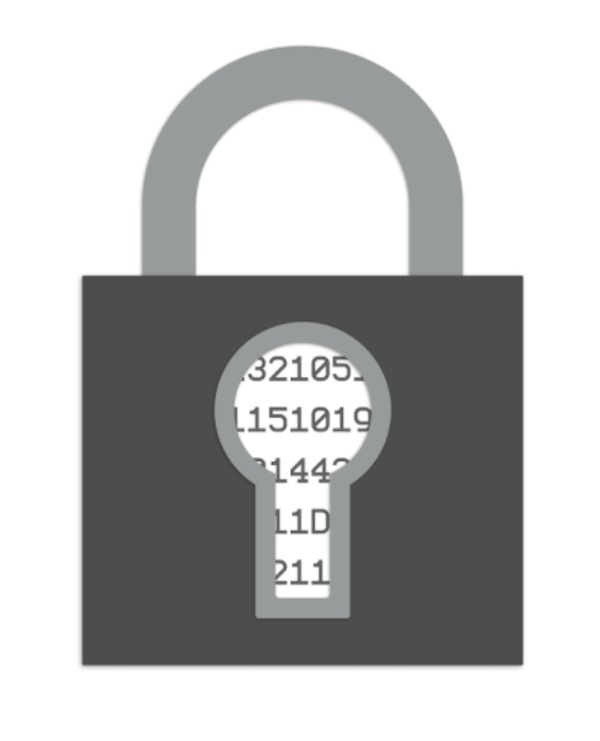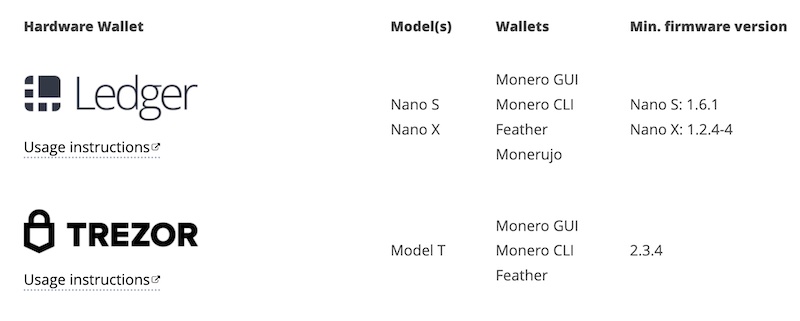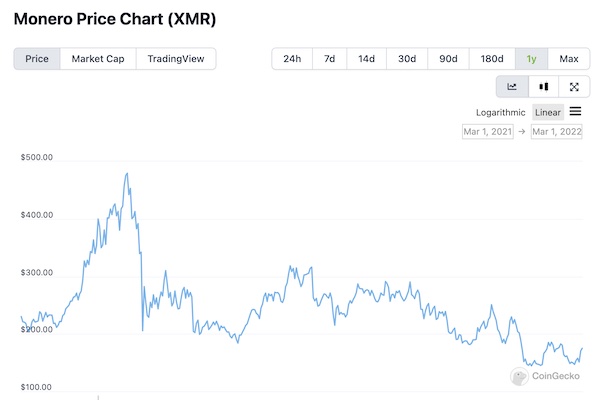Privacy coins are an exciting part of the cryptocurrency ecosystem, and in many ways, they embody the original spirit of the cypherpunks. These individuals set out to change the world with solid cryptography to protect individual privacy rights so citizens from any country could trade freely amongst themselves without government interference.
Monero is one of the privacy coins that sprouted up from seeds of early cypherpunk philosophy. It's a decentralized cryptocurrency that uses privacy-enhancing technologies to obscure transactions and preserve users' anonymity. Further, it's the self-proclaimed leading crypto for conducting private, censorship-resistant transactions.
Monero Explained
On the one hand, Monero is like other decentralized cryptocurrencies in that it's digital cash that allows for affordable payments around the world without third-party interference. Its token is named "XMR," and people often use the two terms interchangeably.

On the other hand, however, the majority of cryptocurrencies have transparent blockchains where any researcher or investigator can trace buyers' and sellers' addresses. This list even includes powerhouses like Ethereum and Bitcoin. Thus, anybody snooping around on Etherscan can potentially link addresses to real-world identities.
However, with Monero, people can use various privacy-enhancing technologies to maintain anonymity. We'll discuss the technicalities of this process below. For now, understand that transactions on Monero are always untraceable. That is somewhat different from how zCash, another privacy coin, uses transparency alternatives selectively. Therefore, Monero can brag that it’s the only privacy coin where users are anonymous by default.
That means sender's addresses, receiver's addresses, and transaction amounts remain hidden through Monero's technologies. Because Monero is not traceable, individuals and merchants accepting Monero do not need to worry about censorship or blacklisted coins.

Ready to get Monero explained on a deeper level? Take the Cryptography and Privacy Coins course at Moralis Academy!
CryptoNote
If you've ever asked the question, what is Monero? It helps to review its origins to get a deeper understanding of how it came to be. CryptoNote is part of Monero's origin story. In addition, it's an application layer protocol that seeks to solve some of the problems with Bitcoin, like transaction tracing, bulky scripts, and financial privacy.
Nicolas van Saberhagen is the original author of the "CryptoNote Whitepaper." It surfaced in 2013, with the writer espousing that anonymity and privacy were crucial to cryptocurrencies. Furthermore, he stated that Bitcoin's traceability proved a "critical flaw" in its design.
The Early Days
Firstly, a poster to the Bitcointalk forum took the CryptoNote concepts and coded them into a coin called BitMonero. Later, after disagreements about the project's direction, the core Monero team forked it, and the community followed along. The Monero core team has overseen the project since.
So, the cryptography community used CryptoNote technology to design Monero. Notably, both the CryptoNote author and the original forum poster's identity remain anonymous. Monero has since built a large developer community dedicated to user privacy. Not surprisingly, many of their identities remain anonymous also.
Monero has gone through several significant improvements since its launch. Most importantly, nearly all these improvements emphasize better privacy and security first and ease of use second. Since launching, over 500 developers worldwide have contributed to the Monero project, and the community operates various chat channels and forums.

Get your team the corporate training it needs for the blockchain!
Understanding the Technology
To get Monero explained, you'll need to know about some of the technologies that drive it. Among other things, Monero has zero-knowledge proofs, stealth addresses, IP address obscuring, baked in to blur transaction details.
1. ZK-Proofs
Developers implemented ZK-Proofs that can validate a transaction without revealing its value.
2. RingCTs
The developers also implemented ring confidential transactions (RingCTs) to obfuscate transactions starting in 2017.
3. Ring Signatures
Ring signature technology protects users sending Monero. It takes a sender's address and groups it with other addresses to blur the lines between an individual and other users.
4. Stealth Addresses
These user-generated addresses protect recipients by making the owner untraceable by network observers.
5. Dandelion++
In addition, The Dandelion++ protocol obscures the IP address of users by utilizing transaction broadcast propagation.
6. Randomx
Monero previously used the CryptoNight Mining Algorithm but later created randomx in November 2019 to validate transactions and issue new tokens. It is a proof of work (POW) algorithm that is ASIC-resistant and produces a new block every two minutes. Further, there is no maximum block size. So, instead of curtailing the block size, the algorithm uses a block reward penalty and dynamic block sizing to ensure scalability. You can visit the Monero website for more details.
What Is Monero? How It Works
With Monero, new transactions go to one node on the network. Then a probabilistic method determines whether to send the transaction to a single node or broadcast it to multiple nodes. This process is called "flooding," and it's a way to defend against the growing number of bots that are constantly analyzing the blockchain.
In sum, to get Monero explained, understand that the network enforces its privacy features by default. However, if users want to permit third-party auditing of their wallets, they have the option to share a private view key.
Cypherpunks, anarchists, and everyday privacy advocates use Monero for its superior privacy features that other cryptocurrencies cannot provide.

Learn about Layer-2 scaling solutions here.
Tracing Transactions
As you can imagine, individuals enjoying complete privacy drives controlling people and regulatory agencies crazy. So, it's not surprising that tracing efforts are always underway. Three significant threats to Monero's privacy came to light in 2017.
1. Uncovering Output Amounts
Researchers tried to leverage the ring signature size to uncover output amounts.
2. Transaction Tracking
Researchers also attempted to track transactions by leveraging output merging by connecting two outputs to the same user. "Churning" is one example whereby a user sends tokens to themselves.
3. Predicting Outputs
Using "Temporal Analysis," researchers believed predicting the correct output in a ring signature could be easier than previously thought.
To sum up, a research paper called "An Empirical Analysis of Traceability in the Monero Blockchain" in 2018 covered some of these potential vulnerabilities. Monero developers and the community had to contend with these challenges to their privacy protocol and overcome them.
Existential Threats to Privacy
More recently, in September 2020, the United States Internal Revenue Service (IRS) offered a $625,000 bounty for any developers who could create a tool to help track Monero transactions (and other privacy cryptos) and de-anonymize its user's addresses. Notably, Chainalysis and Integra were the top finalists.
Further, this brings up the point about critics of XMR and privacy coins in general. Government agencies routinely gripe that Monero's XMR coin is merely a tool of darknet markets, money launderers, and cryptojackers.

Unfortunately for privacy advocates and people from countries with crypto bans who use XMR for fair settlements, headline-catching stories about illicit users can overshadow them. Below are some of the illegal uses for Monero the media often cites:
Darknet Markets
Darknet markets allegedly use XMR as a medium of exchange. AlphaBay, one of the dark markets in question, permitted its vendors to accept Monero instead of Bitcoin in 2016. Law enforcement pulled the site offline in 2017. However, it relaunched in 2021, with Monero at the forefront of accepted cryptos.
Furthermore, in 2019, Reuters also revealed that three of the top five darknet markets used XMR even though Bitcoin was still the leading cryptocurrency of choice.
Learn more about Bitcoin by taking the Bitcoin Monetary Revolution course at Moralis Academy.
Ransomware
Ransomware groups also use Monero. CNBC reported in 2018 that these criminals used Monero in approximately 44% of ransomware cases.
In the infamous WannaCry ransomware attack, the Shadow Brokers gang tried to swap their Bitcoin for Monero. BBC News later reported that the ShapeShift exchange refused the transaction. Consequently, the Shadow Brokers started to accept Monero payments directly instead of Bitcoin in 2017.
In 2021, CNBC and other outlets reported that demand for Monero was on the rise. One reason was that the feds seized a large amount of extorted Bitcoin from the Colonial Pipeline cyber attack. Moreover, Bloomberg reported that the surge in XMR use was due to investigators getting better at tracing Bitcoin transactions.

Notably, Darkside, the gang behind the attack, usually demands Bitcoin or Monero from their victims. However, they charge up to 20% in additional fees for Bitcoin because of the increased risks in traceability. REvil, another ransomware group, removed the Bitcoin option in 2021 and demanded XMR payments exclusively.
Not surprisingly, such illicit uses of the XMR token have motivated regulators to pressure exchanges to delist it.
How to Use Monero Explained
This article not only attempts to answer the question, what is Monero? But it also will demonstrate the basics of how to use it.
What Is Monero GUI Wallet?
To use Monero requires getting a crypto wallet. The Monero GUI wallet is one option, and here are some of its features:
1. Simple Mode
This mode is for users who want to use Monero in the simplest way possible. Users only have to open the Monero wallet and connect to a node to send or receive XMR.
2. Advanced Mode
Monero veterans prefer this mode to access the wallet's more advanced features.
3. Merchants Page
In addition, users can receive XMR tokens for their businesses on the merchant's page. It's compatible with Ledger, Trezor, and other popular hardware wallets.

What Is Monero CLI Wallet?
This wallet uses a command-line interface (CLI) and is best for more advanced users. The CLI wallet grants users complete control over their Monero node and funds. It's highly customizable and free to use. Some of its features are:
1. Nodes
Users can use a local or remote node and alternate between their copy of the blockchain or a public one.
2 Tor Browser
Users can transact over Tor for an extra layer of privacy.
3. Wallet Options
This wallet is compatible with the Ledger Nano S/X and Trezor Model T cold storage wallets. The Monero community also keeps a list of wallets it deems safe on its website.
The Philosophy of Monero Explained
Monero is about more than creating new technology. Most importantly, it's about what the technology stands for. Below are some of the team's vision and values:
1. Security
Monero keeps transactions secure using the latest encryption tools so users can fully trust that their funds won't be subject to the risk of error or attack.
2. Privacy
The Monero team knows that some of its users reside in countries ruled by dangerous dictators, and they could face the death penalty if caught. So, its developers have to take privacy seriously, and their users must be able to trust the protocol implicitly.
3. Decentralization
Monero maintains decentralized code development and network security with its POW consensus mechanism.

Do you want to learn how to use the Polygon bridge? Find out here.
What Is Monero? Conclusion
It should be clear by now that Monero's blockchain is opaque. That means network snoops can't tie their transactions and amounts to a user's address.
Nothing drives regulators crazy like individuals freely trading amongst themselves without oversight. States need tax revenue to survive, and people in positions of power have a bent in their nature to control others. So, anytime a digital currency comes along that can thwart such efforts, state-controlled media outlets will focus on its negative aspects.
Illicit uses of the XMR token will happen. But we saw similar treatment of Bitcoin users in its early days. Reporters constantly tried to equivocate Bitcoin with the criminal underbelly of society. If one read about Bitcoin in mainstream publications, it was practically synonymous with the unlawful activities at Silk Road.
Regardless of the negative press, the cypherpunks and early cryptographers who were the first to code their idealistic visions of a global financial alternative into a reality would have more in common with Monero today than some of the more popular blockchains.
Kick your career into high gear by learning how to become a blockchain developer today at Moralis Academy.




